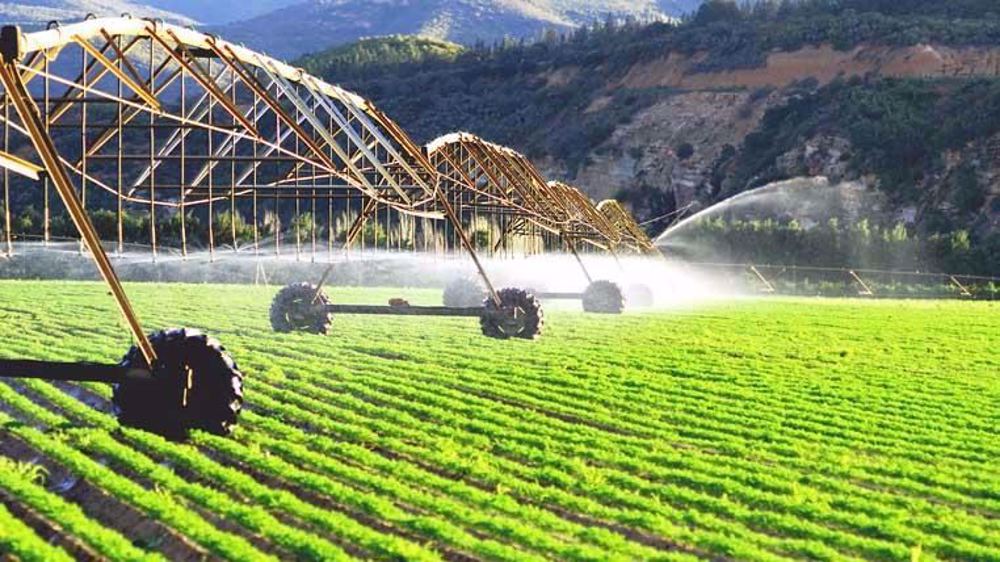Feeding the future: Iran gets major offers for overseas cultivation
Since the beginning of its term, the current government has seriously pursued effective measures to improve the agricultural sector and ensure the country's food security, including through farming overseas.
Food security is considered a key challenge of our time and a pivotal factor for sustainable development of communities and alleviating poverty.
Even though Iran has special fertile soil in some regions of the country, the rapid erosion of the soil has been greatly accelerated by wrong traits such as lack of crop rotation. Hence, experts are suggesting many methods to ensure food security, one of which is the development of overseas farming.
Overseas cultivation is basically using the resources, capacities and facilities of other countries to produce the necessary agricultural products in order to preserve and improve food security.
The issue of overseas farming has come to attention for several years, as the increasingly cyclical occurrence of drought compounded by severe depletion of water resources and its impact on people's livelihood has raised alarm in Iran.
For a long time, one of Iran’s aspirations has been self-sufficiency in strategic agricultural products such as wheat, oilseeds and livestock inputs, which requires sufficient water resources, but successive droughts in recent years and the lack of water resources have made it far-fetched of a goal, giving weight to the idea of overseas cultivation.
Of the 162.2 million hectares of land in Iran, more than 18 million hectares is agricultural land, which constitutes 12% of the country's land area. However, about 85% of Iran’s fresh water is consumed in agriculture, which explains why overseas cultivation can be a shortcut for agricultural development and revival of the country's water resources.
Overseas cultivation in the world dates back to 25 years ago. In Iran, the first push toward the practice began in 1995 when the ministry of agriculture undertook to launch projects under the banner of "Green Jihad", but the idea never came to life.
The US was among the first countries which chose to reduce the cost of agricultural products by cultivating in countries with cheaper labor, establishing itself as one of the largest overseas cultivators.
China is implementing the largest rice cultivation project in Mozambique to help supply a rapidly growing economy in the world’s most populous country. For several years now, India has been carrying out crop and orchard farming in Australia to cover shortfalls in the second most populous country.
For almost 10 years, the UAE has been investing in Sudan where it has cultivated almost 280,000 hectares of land around Khartoum. In Pakistan, it has so far been able to cultivate 325,000 hectares of rice and wheat as part of its bid to become the first producer of agricultural products in the Persian Gulf.
Some private Iranian investors have also started growing grains and greenhouse gardening in Georgia, Ukraine, Tajikistan and African countries, but the size of their operation is small.
In May, Russia offered to provide 100,000 hectares of land to Iran for cultivation when a business delegation from the country visited the Islamic Republic. This proposal, which is unprecedented in its kind, may be more feasible than ever due to the fact that both countries are under sanctions.
However, this is about 0.8 percent of the entire cultivated area in Iran, which is negligible. According to officials, Iran must plan for cultivation on 7 million hectares, but the current figure is less than 11%.
Other countries, including Armenia and Ghana, have also offered land to Iran for cultivation. A Ghanaian delegation proposed 5,000 hectares of land for production of livestock inputs during a recent visit.
Last week, an Iranian official said Venezuela has agreed to provide one million hectares of agricultural land for Iran’s overseas cultivation projects to secure food.
Ali Rezvanizadeh said Venezuela can provide a better opportunity than Brazil and Russia for Iran’s overseas agricultural projects, including growing crops of soy beans and corn.
Tehran and Caracas last month announced a 20-year cooperation plan in the fields of oil, refining, petrochemicals, defense, tourism and culture, and agriculture during President Nikolas Maduro’s visit to Iran.
‘French army fits in one football stadium’: Politician mocks troop deployment to Ukraine
At least 40 Palestinian journalists being held in Israeli prisons: Advocacy group
US delivers more F-35 jets to Israeli regime despite Gaza truce violations
Blair distances himself from Trump’s $1bn ‘Board of Peace’ fee
US Justice Department refuses probe into killing of Minneapolis mother
VIDEO | Israel Gaza ceasefire violations
VIDEO | Gaza Solidarity Forum in Damascus calls for boycott of Israel over Gaza genocide
VIDEO | London memorial event highlights Gaza genocide










 This makes it easy to access the Press TV website
This makes it easy to access the Press TV website